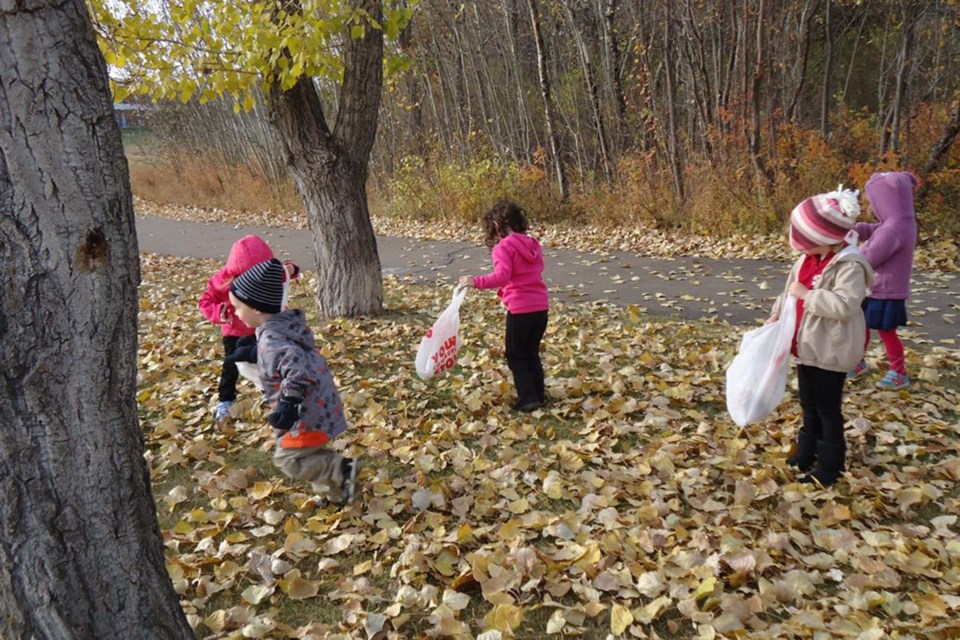Child-care operators in St. Albert with growing worries over low enrolment due to COVID are hopeful the province will kick in more financial support until the sector stabilizes and more parents return to work in person.
Some day cares are concerned they can't keep their doors open for much longer.
“For example ... we've got about 25 kids out of 74,” said Mezia Hussain, executive director of St. Albert Day Care Society.
Hussain said many parents are still working from home and have found other ways to meet their child-care needs. Parents may also be scared to send their children to day care because they fear COVID spread and don’t know the safety protocols centres have in place.
“Day cares are there to help the parents, help whoever needs to go back to work. We've been doing this for almost two years. And you know, knock on wood, [there have] not been very many cases, or very [few COVID] cases,” she said.
Hussain said government wage subsidies are not enough. Day care centres are still losing money every month.
“I belong to certain groups, day care groups, and things like that. And just recently, we had a director email all of us and basically say, ‘If you've got work for some of my educators, I have to lay off four of my educators in September.’ It's ridiculous, and it's not to say that educators don't want to work,” she said.
On Nov. 8, Rakhi Pancholi, NDP critic for children’s services, called on the province to provide temporary financial support to child-care operators to stabilize the child-care sector.
“We estimate that there is approximately $70 million in the children's services budget available to date to be used to support child-care operators immediately,” said Pancholi in a press conference, adding this funding is not new money, or money diverted from other programs, but child-care cash already set aside in the provincial budget that is not currently being spent.
“I think it's extremely reasonable to use that money to keep these child-care facilities open and to help parents stay in their jobs. If the UCP fails to act, these businesses will go under. Alberta will lose child-care capacity,” she said.
The YMCA, the largest non-profit child-care operator in Alberta, has closed 13 of its 72 programs since the pandemic began, said Pancholi.
“Many programs are operating at approximately 60-per-cent capacity or far less, and that's really affecting their ability to keep the lights on,” Pancholi said.
Shortly after the NDP press conference, the province sent out a press release stating it would direct around $35 million to help recruit and keep skilled educators, and provide operators with one-time COVID-relief funding.
Of that $35 million, $20.57 million has been allotted for child-care staff recovery and retention — around $19 million of which has already been applied for and received.
There is also $15 million earmarked for the one-time COVID-19 relief funding for child-care operators. The money was initially not spent due to lower-than-expected enrolment and expenditures and was part of "bilateral funding from the federal government for COVID-19 relief to further support operators as quickly as possible."
Rebecca Polak, press secretary to the minister of children’s services, said in an email that details about the new COVID relief funding program would soon be released, and the funding would be distributed starting in December.
Hussain was unaware of the new COVID relief fund at the time of the Gazette interview, but said the grants for staff recovery and retention, which were released Sept. 1, have very specific criteria.
“For [the recovery and retention grant] just for hiring new staff and retaining the staff that you do have ... you can't spend it on their salary. You can spend it on bonuses and stuff. And it's very weird,” she said.
Funding for professional development, which falls under staff retention and recovery, allows Hussain to spend money on staff conferences or online learning, but the cash won’t cover the cost of a computer with cameras so they can take the courses after work.
“We desperately need computers. We have computers that are just like desktops, no cameras, no nothing,” she said.
Hussain said she would like to spend the money on operating costs, “Because that's the majority of what we have to deal with is operating cost,” she said.
She said she values her employees, and the retention grant is great. She will find creative ways to use it. But non-profits such as hers have been struggling.
“There are no companies that are doing donations … they're all tapped out," she said of their current fundraising challenges. "Avenues that we would normally look at, we can't because there's nothing there,” she said.
She also doesn’t understand why the province came up with more cash for child-care subsidies when many parents aren’t going back to work.
“Why are we increasing subsidy and the threshold when parents aren't even utilizing it?”
Day-care centres still have to pay for rent and power and they aren’t receiving any additional deductions or breaks on those expenses.
“If enrolment doesn't increase then a lot of centres are going to run out of the funding that the government did give them kind of at the beginning of this year,” said Hussain.
“A lot of centres are going to have to make that decision of whether they cut down in staff or close rooms or close programs, and then eventually close all together.”




